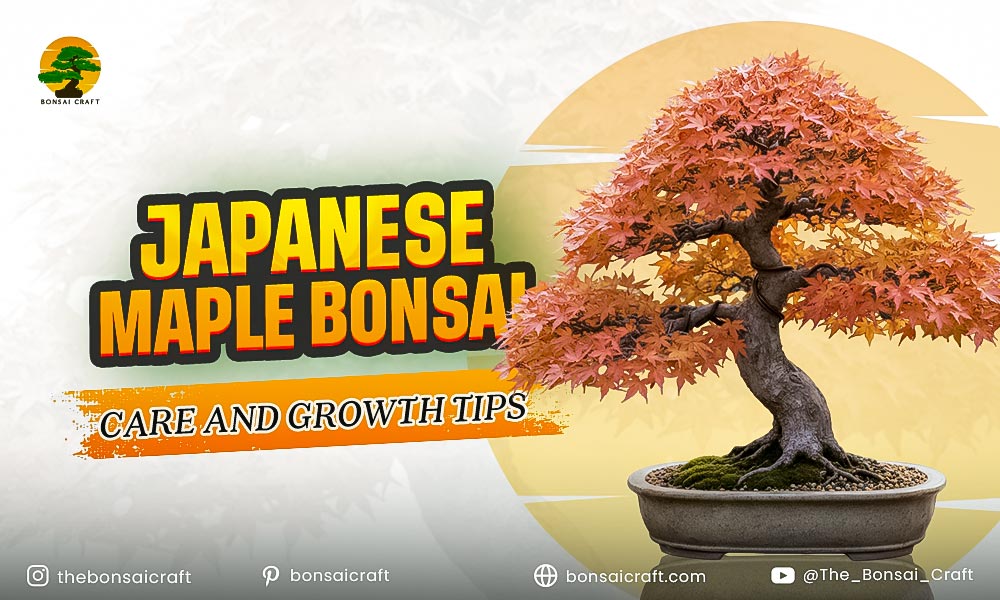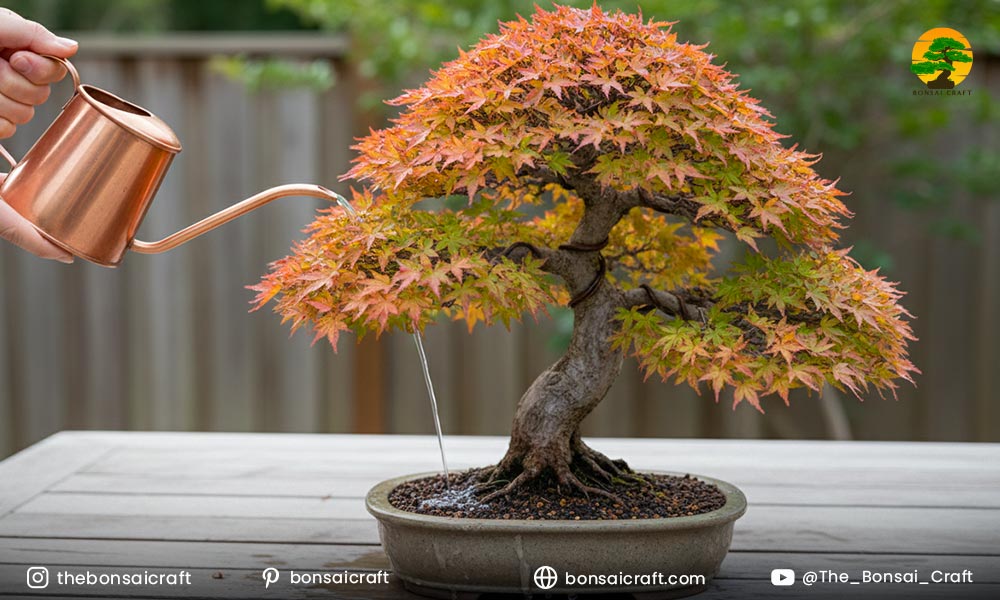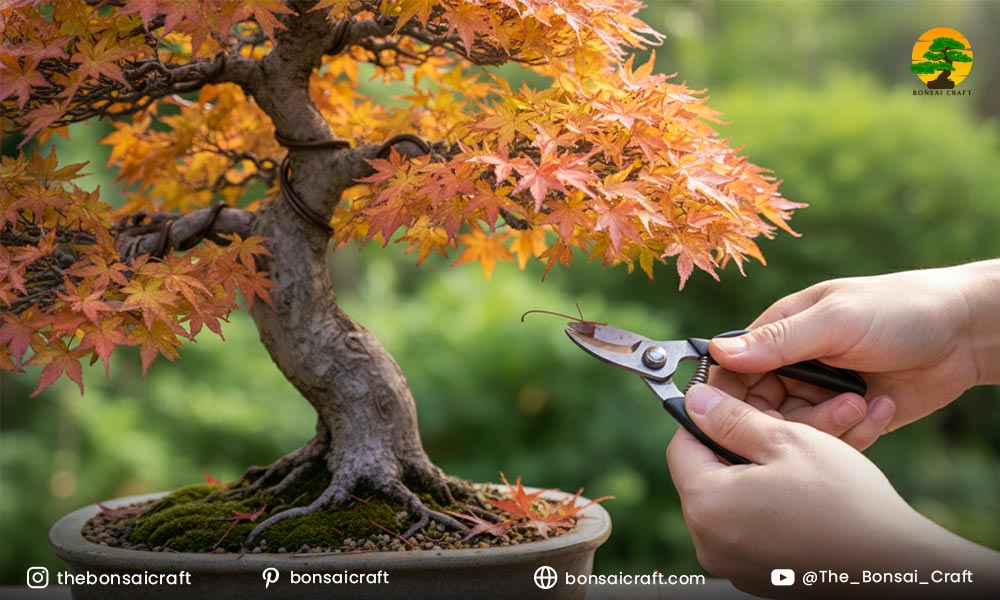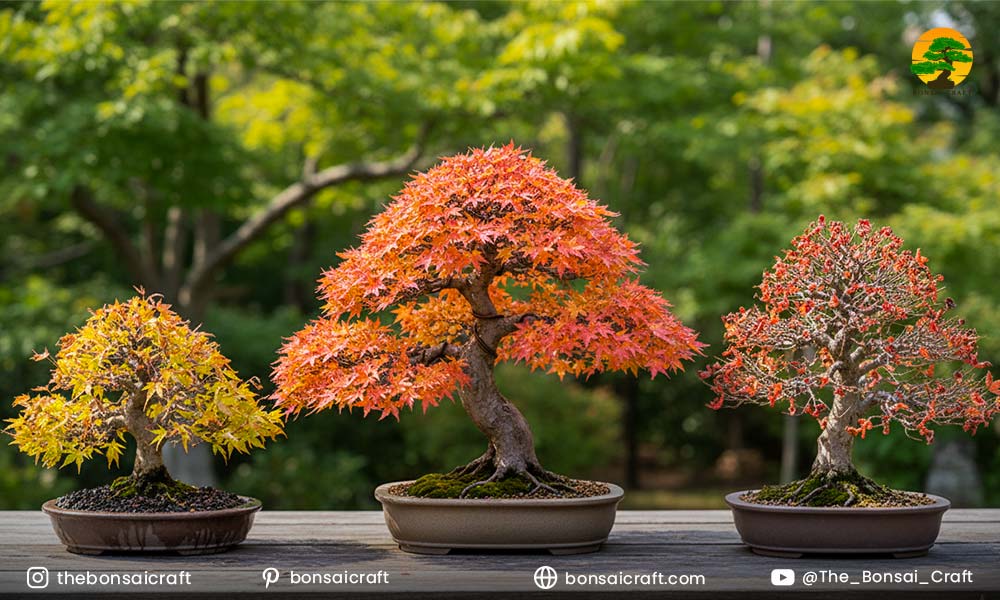
The Japanese maple bonsai tree is a popular choice among bonsai enthusiasts for its delicate beauty, striking foliage, and intricate branching. Whether you’re a beginner or a seasoned bonsai grower, learning how to care for a Japanese maple bonsai tree can be both an enjoyable and rewarding experience. From the purple ghost Japanese maple bonsai to the more traditional red maple bonsai, this tree species can add an elegant and vibrant touch to any indoor or outdoor garden.
In this guide, I’ll share expert advice on how to grow and care for your bonsai Japanese maple, covering everything from pruning techniques to when to repot your tree. Whether you’re working with indoor Japanese maple bonsai or growing a bonsai maple tree from seeds, you’ll find everything you need to know to keep your tree healthy, vibrant, and thriving.
Introduction
Caring for a Japanese maple bonsai requires more than just regular watering and sunlight. These trees, known for their striking leaves and graceful appearance, have specific needs that must be met for them to grow and flourish. Whether you’re interested in the Japanese red maple bonsai or the purple ghost Japanese maple bonsai, each variety has its own set of care instructions. As an expert in bonsai Japanese maple care, I’ve compiled all the essential tips you need to successfully nurture your tree.
In this article, I’ll cover the basic bonsai maple tree care essentials, including pruning, wiring, repotting, and propagation, as well as common mistakes to avoid. So, whether you’re wondering how to bonsai a Japanese maple or how long to grow Japanese maple bonsai from seed, you’ve come to the right place.
How to Care for Japanese Maple Bonsai: Essential Tips

Watering Your Japanese Maple Bonsai
Watering is one of the most important aspects of Japanese maple bonsai care. Improper watering can lead to a host of problems, such as root rot or dehydration. Here’s how to ensure your bonsai maple tree stays hydrated:
- Watering Frequency: Japanese maples grow best when the soil is consistently moist. If the top inch of soil is bone dry, water the bonsai. In winter, very little water is needed; however, during the growing season, more frequent watering is needed.
- Proper Drainage: In the case of a bonsai, as with any other plant, it is best to water correctly. Watering to the point of overflowing creates water logs and root rot.
- Avoid Overwatering: Just as dry soil is not recommended, soil that is overly soggy can also be very counterproductive. Sogginess can be equally harmful as dryness.
Lighting for Your Japanese Maple Bonsai
Japanese maple bonsais thrive when exposed to bright, indirect light. Proper lighting is crucial for bonsai Japanese maple health, whether you’re growing your tree indoors or outdoors:
- Outdoor Bonsai: For outdoor trees, place your Japanese maple bonsai tree in a location with partial shade. Direct sunlight can scorch the delicate leaves, so it’s best to provide some protection, especially in the heat of the afternoon.
- Indoor Bonsai: If you’re growing an indoor Japanese maple bonsai, place it near a window where it can receive bright, indirect light. If natural light is insufficient, you can supplement with grow lights.
Soil Requirements for Your Japanese Maple Bonsai Tree
Choosing the right soil is crucial for the health of your maple bonsai tree. Bonsai soil must have the right balance of drainage and moisture retention. Here’s what you need to know:
- Bonsai Soil Mix: Use a well-draining mix designed for bonsai trees. A typical mix for Japanese maple bonsai includes akadama, pumice, and lava rock, ensuring proper drainage while retaining enough moisture for the tree’s roots.
- Repotting: Repot your bonsai Japanese maple every 1-2 years to refresh the soil and prevent the roots from becoming root-bound. Repotting is also a great opportunity to trim the roots and maintain the tree’s health.

Pruning and Shaping Your Japanese Maple Bonsai
Pruning is one of the most important aspects of bonsai Japanese maple care. Proper pruning will help maintain the tree’s shape and encourage the growth of smaller, more delicate leaves. Here’s how to approach pruning:
- When to Prune: The best time to prune your bonsai maple tree is during the late fall or early spring, when the tree is dormant. Avoid pruning during the growing season, as it can stress the tree.
- Pruning Techniques: Always use sharp, clean tools to prune your Japanese maple bonsai tree. Trim away any dead or overgrown branches, and regularly pinch back new growth to encourage branching.
- How to Prune Japanese Maple Bonsai: Focus on creating a strong structure by pruning the trunk and branches to achieve a balanced shape. Remove any unwanted or crossing branches to allow for better air circulation.
When to Wire Japanese Maple Bonsai
Wiring is an essential part of bonsai care, as it allows you to shape your tree and guide its growth. Wire your Japanese maple bonsai when it’s young and flexible, as older wood becomes harder to bend without causing damage.
- Best Time to Wire: The best time to wire your bonsai Japanese maple is during the early spring, before new growth begins. Be sure to check the wire regularly to ensure it doesn’t cut into the bark as the tree grows.
- Wiring Tips: Use aluminum or copper wire to shape the branches. Carefully bend the branches into the desired position, but avoid wiring the trunk too tightly, as this can cause damage.
How to Propagate Japanese Maple Bonsai
Propagating Japanese maple bonsai from seed can be a fun and rewarding experience, but it requires patience. Here’s how to propagate your Japanese maple bonsai tree:
- Growing from Seed: To grow a bonsai maple tree from seed, collect Japanese maple seeds (also known as samaras) in the fall. Soak the seeds in water for a day, then stratify them by placing them in the refrigerator for about 30-60 days.
- Planting the Seeds: After stratification, plant the seeds in a well-draining bonsai soil mix and keep the soil moist. It may take several months for the seeds to sprout, so be patient.
- Transplanting: Once the seedlings are large enough, transplant them into their individual pots and continue to care for them like any other bonsai tree.

Common Mistakes to Avoid When Caring for Japanese Maple Bonsai
Even experienced bonsai enthusiasts make mistakes. To help you avoid pitfalls, here are a few common mistakes to watch out for:
- Overwatering: Japanese maples are sensitive to excess water, so always check that the soil is draining properly and never leave the roots sitting in water.
- Pruning Too Much: Over-pruning can stress your tree and prevent it from thriving. Always follow a balanced approach to pruning and never cut more than 1/3 of the tree’s branches at once.
- Incorrect Lighting: If you place your bonsai in direct sunlight without protection, it can cause leaf scorch. Make sure to provide partial shade or indirect light.
Conclusion
Caring for a Japanese maple bonsai tree requires patience, attention to detail, and a deep understanding of the tree’s needs. Whether you’re growing a purple ghost Japanese maple bonsai or a more traditional red maple bonsai, providing the right water, light, and soil conditions is crucial. Pruning, wiring, and repotting are essential tasks that help shape the tree and promote healthy growth.
As an expert in bonsai Japanese maple care, I recommend maintaining a consistent care routine, regularly monitoring your tree’s condition, and making adjustments based on seasonal changes. With the right attention, your bonsai maple tree will grow into a beautiful and thriving miniature masterpiece.
FAQs
Can you bonsai a Japanese maple?
Yes, a Japanese Maple is a great candidate for bonsai, as their graceful structure and beautiful leaves lend well to the hobby. If treated with proper care, the tree can be shaped into a stunning bonsai specimen.
When to prune Japanese maple bonsai?
The best time to prune Japanese maple bonsai is during late fall or early spring when the tree is dormant. Avoid pruning during the growing season to prevent stress on the tree.
How long does it take to grow a Japanese maple bonsai from seed?
With proper care, it takes between 2 to 3 years to grow a Japanese maple bonsai from seed. Patience is important, and nurturing the seed is crucial to maturing the tree for shaping.
How to care for the Japanese maple bonsai tree?
Like many bonsai trees, the Japanese maple bonsai will need shaping and health care. Regular watering, proper light exposure, and the best soil for bonsai trees will help maintain its ideal form. Soil that does not retain lots of moisture is preferable.
How to propagate Japanese maple bonsai?
To propagate Japanese maple bonsai, collect seeds in the fall, stratify them, and plant them in a well-draining soil mix. It may take several months for the seeds to germinate.
